Exploring the Complexities of Brain Function

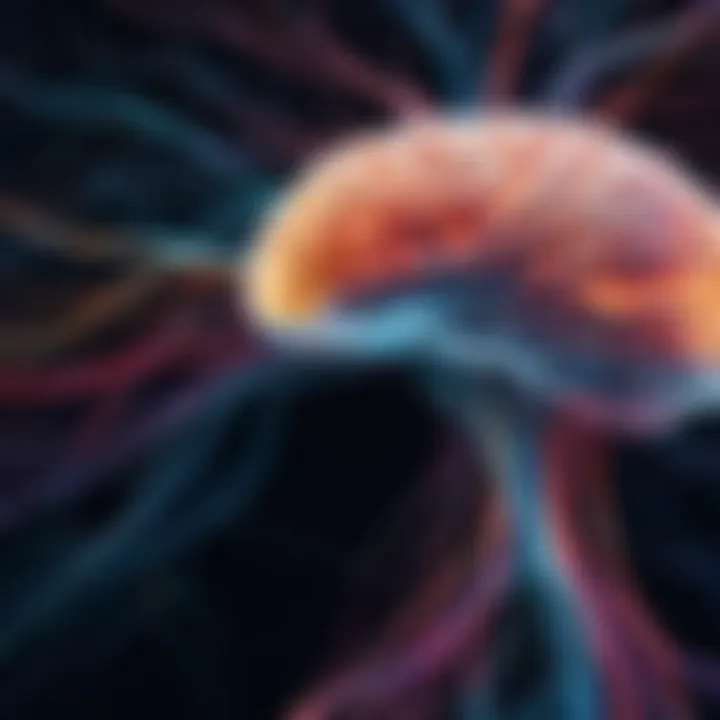
Intro
The human brain, a complex marvel, serves as the hub of human functionality. It’s where thoughts, emotions, and actions converge, forming the essence of who we are. Understanding the brain's functionality is crucial, not just in a scientific sense, but it impacts how we interact with the world around us. With close to 86 billion neurons communicating through trillions of synapses, the intricacies of this organ are nothing short of astonishing.
Technology Insights
Latest Tech Trends
With advancements in technology, studying the brain has taken on new dimensions. Functional Magnetic Resonance Imaging (fMRI) and Electroencephalography (EEG) are just the tip of the iceberg. These technologies allow scientists to visualize brain activity in real-time, shedding light on how we process information and respond to stimuli. In today’s tech-driven world, these insights are fundamental for developing AI systems that mimic human thought, pushing boundaries in areas like robotics and machine learning.
Innovation in Tech
The fusion of neuroscience and tech is revolutionizing treatment and enhancement of cognitive functions. For instance, companies like Neuralink are aiming to create brain-computer interfaces that could aid in neurological disorders or enhance everyday brain functions. Imagine waving goodbye to memory loss or learning new languages in weeks instead of years. The implications are profound, not merely for medicine but for redefining how we explore intelligence itself.
Product Reviews
Neurotechnology products are gradually entering the consumer market. Devices like Muse headbands provide users with insights into their mental states, offering guided meditation to enhance focus. These products highlight the growing interest in understanding brain function and its direct application in enhancing daily life—making psychology less abstract and more hands-on.
Cognitive Processes
Understanding cognitive processes inside the brain is key to grasping how we think and behave. The brain's ability to adapt, known as neuroplasticity, highlights how experiences shape our neural pathways. This adaptability doesn't just stop at basic learning; it's essential during recovery from incidents like strokes, where alternative pathways can replace damaged ones.
"Neuroplasticity offers hope as it embodies the brain's capacity for self-repair, capable of changing its structure and function in response to experience."
Behavior and Decision-Making
Our behavior and decisions are influenced heavily by the brain’s architecture. Different regions play distinct roles; for instance, the amygdala controls emotions, while the prefrontal cortex is essential for planning and reasoning. Miscommunication between these regions can lead to impaired judgment or emotional turmoil.
Understanding these dynamics opens doors to improved mental health strategies and decision-making frameworks. Therapies that target specific areas of the brain can assist individuals in managing emotions, reducing anxiety, or increasing their impulse control.
The End
In mastering the functions of our brain, we not only learn about ourselves but open the door to endless possibilities in tech, psychology, and health. As the interplay between neuroscience and technology continues to evolve, staying informed allows us to leverage these developments to improve our lives and understanding of human potential.
The Human Brain: An Overview
The human brain stands as one of the most intricate and vital components of our biology. It not only orchestrates our bodily functions but also plays a pivotal role in shaping our experiences and interactions with the world. To grasp the full extent of what makes the brain so fascinating, one must delve into its fundamental structures and functions. This section will provide a roadmap, guiding readers through the complexity of the brain, setting the stage for more specialized discussions later in the article.
Understanding the brain's functionality is essential for anyone looking to comprehend how we perceive reality, make decisions, and interact socially. Its anatomy is not simply a collection of parts; rather, each division and region works in concert to facilitate a myriad of processes critical for both survival and cognition. When we discuss the brain, we embark on a journey that touches on everything from neurological pathways to emotional regulation.
Anatomical Structure of the Brain
The anatomical framework of the brain is akin to a well-oiled machine, with each component performing its designated role. This structure encompasses various lobes, each responsible for different facets of human functionality. For instance, the frontal lobe engages significantly in decision-making, while the occipital lobe is primarily responsible for visual processing. The interconnectivity between these regions ensures that our bodily responses and cognitive capabilities are seamlessly synchronized, facilitating complex behaviors and thought processes.
Divisions of the Brain
Mapping out how the brain is divided can be likened to unpacking a complex puzzle. Each division offers unique contributions to our understanding and awareness, and they can broadly be grouped as follows:
Cerebrum
The cerebrum is undoubtedly the powerhouse of the brain, comprising the bulk of its mass. Its significance lies in its involvement in higher-order functions such as reasoning, problem-solving, and emotional regulation. A defining characteristic of the cerebrum is its cerebral cortex, often referred to as the "gray matter" due to its hue. It is here that complex processing occurs, making it a popular focus in discussions surrounding cognitive functions. One unique feature of the cerebrum is its ability to adapt through experiences, allowing for increased efficiency in cognitive tasks over time.
However, the cerebrum's complexity can also lead to challenges, including susceptibility to neurological disorders that can disrupt its intricate workings.
Cerebellum
Contrasting the cerebrum, the cerebellum plays a critical role in coordination and balance. It's a smaller structure located at the back of the brain, often overlooked. Despite its size, its contribution to finer motor skills is indispensable. Without an optimally functioning cerebellum, tasks such as playing an instrument or even walking would be dramatically impeded. What's remarkable about the cerebellum is its distinctive appearance, marked by a pattern of folds that enhance its capacity for processing. While it may not be recognized like the cerebrum, its functions are equally vital, and its disruption can lead to motor control problems.
Brainstem
The brainstem serves as the crucial connection between the brain and the spinal cord, essentially acting as a communication highway. It governs essential life functions such as breathing, heart rate, and blood pressure—functions we typically take for granted but are vital for survival. The brainstem is composed of three main parts: the midbrain, pons, and medulla oblongata, each contributing to various autonomic processes. Its noteworthy characteristic is that it remains active even during sleep, ensuring that these life-preserving functions are uninterrupted.
Accessing and understanding the workings of the brainstem is invaluable for comprehending overall brain health, as disruptions here can lead to significant life-threatening conditions and diminished quality of life.
"The study of the brain is vital for understanding not just how we think or feel, but also how we function day to day."
In summary, the human brain is an intricate network of regions that each contribute to our cognitive and physical capabilities. This overview not only highlights the importance of these divisions in neuroscience but also underscores the depth of inquiry necessary for grasping the full functionality of one of nature's most complex creations.
Neural Communication
The brain functions as the command center for the human body, executing an intricate dance of communication across its various regions. Neural communication is the bedrock of how these interactions occur. It hinges on the interactions between neurons, with each playing a pivotal role in the flow of information. This process is not just vital from a technical standpoint, but it is also fundamental in understanding how we perceive our world, make decisions, and engage in social interactions.
Neurons: The Basic Units
Neurons are the essential building blocks of the nervous system. Each neuron is made up of three primary components: the cell body, dendrites, and an axon.
- Cell Body: Contains the nucleus and organelles; it's the metabolic center.
- Dendrites: Branch-like structures that receive signals from other neurons.
- Axon: A long projection that transmits electrical impulses away from the cell body.
The unique structure of neurons allows them to communicate effectively. When a neuron is stimulated, it can send signals down its axon to other neurons, muscles, or glands, forming an expansive network of communication.
Synaptic Transmission
When impulses travel along the axon and reach the end, they must bridge the gap, known as the synapse, to continue their journey. Synaptic transmission is the way in which information is transmitted from one neuron to another.
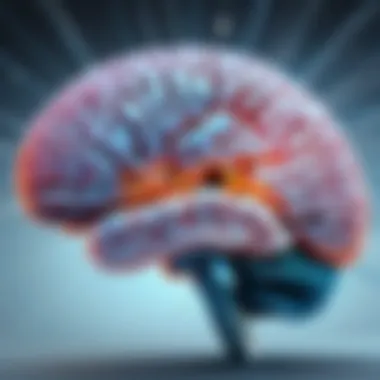
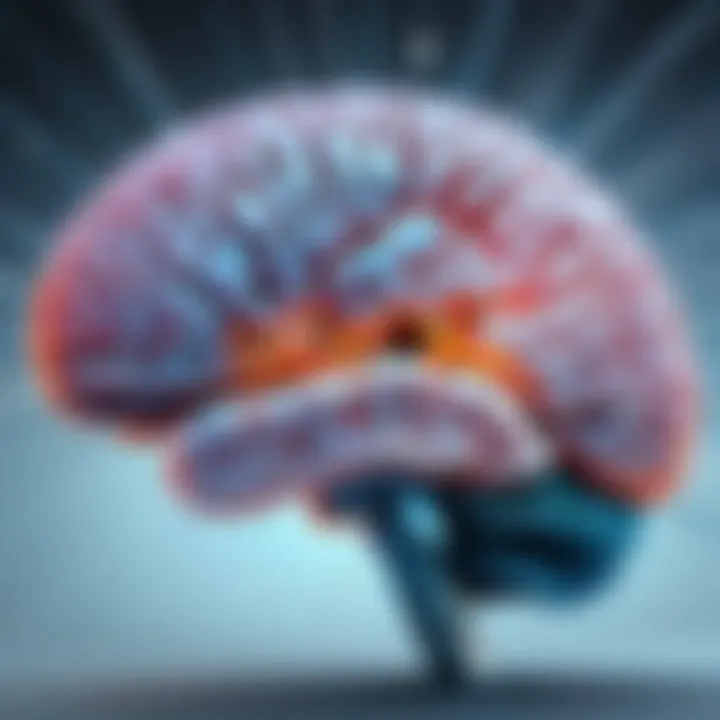
In simple terms, when a signal reaches the axon terminals of a neuron:
- The electrical impulse triggers the release of neurotransmitters from vesicles.
- These chemicals cross the synaptic gap and bind to receptors on the receiving neuron's dendrites.
- Depending on the nature of the neurotransmitter, this binding can either stimulate or inhibit the receiving neuron.
This process of synaptic transmission is what allows for rapid and complex communication between brain cells, which is crucial for everything from reflexes to higher-order thinking.
Neurotransmitters: Chemical Messengers
Neurotransmitters are the key chemicals that facilitate communication between neurons. They can bind to receptors, triggering various responses in the receiving neuron. This section explores two significant aspects of neurotransmitters: their types and functions.
Types of Neurotransmitters
Neurotransmitters can be classified into several categories based on their functions and structures. Here are a few critical types:
- Excitatory Neurotransmitters: Such as glutamate, which increases the likelihood of the receiving neuron firing.
- Inhibitory Neurotransmitters: Such as gamma-Aminobutyric acid (GABA), which decreases that likelihood.
- Modulatory Neurotransmitters: Such as dopamine, which play a role in modulating other neurotransmitter systems.
The significance of various neurotransmitters cannot be overstated; they not only determine how signals move through the brain but also have vast implications for mental health and cognition.
Functions and Effects
The functions of neurotransmitters go beyond mere connections between neurons. They influence a myriad of brain functions:
- Mood Regulation: Neurotransmitters like serotonin are crucial for emotional well-being.
- Memory and Learning: Acetylcholine plays a role in memory formation and cognitive functions.
- Motor Control: Dopamine is vital for coordinating smooth muscle movements.
Understanding how these chemicals affect the brain's intricate workings sheds light on various psychological and physiological conditions, emphasizing their role in both healthy functioning and disorder.
As we untangle the web of neural communication, we gain crucial insights into how the brain operates. From the basic units known as neurons to the complex interactions mediated by neurotransmitters, these processes form an intricate tapestry that underpins our behavior, emotions, and cognitive abilities.
The Role of Brain Regions in Function
Understanding how specific brain regions contribute to various functions is crucial for grasping the complexity of the human brain. The brain isn’t just a single entity; it’s a mosaic of interconnected areas, each responsible for unique tasks. In a nutshell, knowing the functions of these regions helps us appreciate the dynamic interplay that occurs within our brains as we navigate daily life. For instance, identifying how the frontal lobe facilitates decision-making can clarify why someone might struggle with impulse control.
What’s more, each region does not operate in isolation. Their networks overlap, allowing for seamless communication. This area of study sheds light on conditions that disrupt normal functioning, advocating for a deeper understanding of both health and disease management.
Frontal Lobe Functions
The frontal lobe holds the reins over several higher cognitive functions. Located in the front part of the brain, it’s a key player in decision-making, problem-solving, and emotional regulation. One might say it’s like the conductor of an orchestra, ensuring that all sections harmonize to create a cohesive performance.
- Planning and Organization: The frontal lobe helps us strategize our actions and plan for the future. This ability is vital in scenarios such as managing work projects or even deciding what to eat for dinner.
- Impulse Control: A significant part of social behavior, controlling impulses comes from this region. It’s what helps someone stop before saying something regrettable in the heat of the moment.
- Emotional Regulation: The frontal lobe also plays a critical role in regulating our emotions. It evaluates social contexts and adjusts emotional responses accordingly.
Understanding the frontal lobe's functions can illuminate why some individuals may excel in social settings while others may struggle.
Temporal Lobe Contributions
Moving on to the temporal lobe, this area, located beneath the frontal lobe, is largely associated with auditory processing and memory. Think of it as the library of the brain where sensory information is cataloged and stored.
- Memory Formation: The temporal lobe is crucial for consolidating new information into memory. This is where your brain records what you had for breakfast or the lyrics to your favorite song.
- Language Comprehension: This region also plays an integral part in understanding spoken language, allowing for meaningful communication with others. A deficiency here can lead to challenges in language acquisition or processing.
- Emotional Responses to Stimuli: Interestingly, the temporal lobe facilitates emotional responses to sounds, be it a baby’s laughter or a waxing lyrical piece of music.
Thus, understanding the temporal lobe allows us to see how closely intertwined memory and language are in our social interactions.
Parietal Lobe Operations
The parietal lobe, sitting behind the frontal lobe, is the hub for processing sensory information. Its contributions to spatial orientation and sensory perception are critical in how we interact with the environment around us.
- Somatosensory Processing: This region interprets touch, pain, temperature, and proprioception, allowing one to navigate everyday tasks, from holding a coffee cup to typing a message.
- Spatial Awareness: The parietal lobe helps in understanding spatial relationships, guiding movements and interactions with objects around us. This is especially useful for athletes and other professionals who rely on accurate spatial judgments in their work.
- Integration of Information: It acts as a bridge, combining information from various senses, thus enriching our experience of the world.
Overall, the parietal lobe illustrates how sensory experiences lay the foundation for our actions and decisions.
Occipital Lobe's Role in Vision
Last but not least, the occipital lobe is predominantly dedicated to visual processing. Tucked away at the back of the brain, its significance cannot be overstated.
- Visual Perception: Here, visual stimuli are interpreted, allowing us to make sense of the world around us. Colors, shapes, and motion get processed in real-time, turning light waves into vivid imagery.
- Recognition and Categorization: This area aids in recognizing faces and objects, enabling us to distinguish between a familiar face and a stranger in a crowd.
"The occipital lobe serves as the visual processing center, emphasizing how perception shapes our reality."
Thus, the functionality of the occipital lobe illustrates how our perceptions frame the experiences we gather throughout life, impacting our day-to-day decisions and interactions.
In summary, each brain region has specialized functions, yet they collaborate to establish a unified system that shapes human experience. By delving into these regions, we can better understand the nuances of behavior and cognition, offering pathways for interdisciplinary approaches, whether in health sciences or artificial intelligence.
Cognitive Processes
Cognitive processes are the very backbone of human behavior, shaping not just our actions, but our understanding of the world around us. In this article, the exploration of cognitive processes helps to peel back the layers of how the brain orchestrates everything we perceive and accomplish. From the moment we wake up to the nuances of everyday decisions, our cognitive functions guide us through a complex interplay of stimuli, memories, and problem-solving strategies. Understanding these processes allows us to see the mind not as a static entity but as a dynamic and evolving system.
Perception and Sensory Processing
Perception is the gateway through which we experience the world. It's more than just passive observation; it's a highly active process by which the brain interprets sensory inputs. The brain tirelessly sifts through what our senses report—sight, sound, touch, taste, and smell—crafting a coherent picture of reality. Think of it as your personal detective, piecing together clues from the environment to form a narrative.
Each sense has its own pathways and roles. For instance, the visual cortex processes what we see, while the auditory cortex tunes into sounds, revealing how our brains work in tandem to create a seamless experience. This intricate sensory ballet is crucial because our perception profoundly affects not only how we interpret situations but also how we respond to them. A perceptual error can lead to misguided decisions, illustrating why the clarity and accuracy of sensory processing are critical in everyday life.
Memory Formation and Recall
Memories are the threads that weave the fabric of our identity. They allow us to retain past experiences, shaping our present reactions and future decisions. Understanding memory isn’t merely an academic exercise—it’s pivotal for grasping how we learn and develop over time.
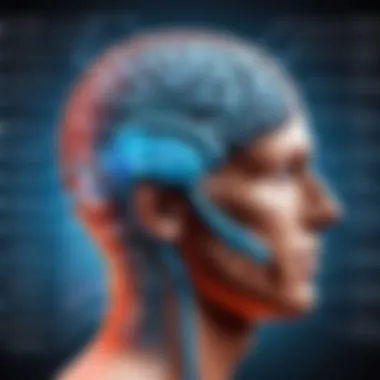
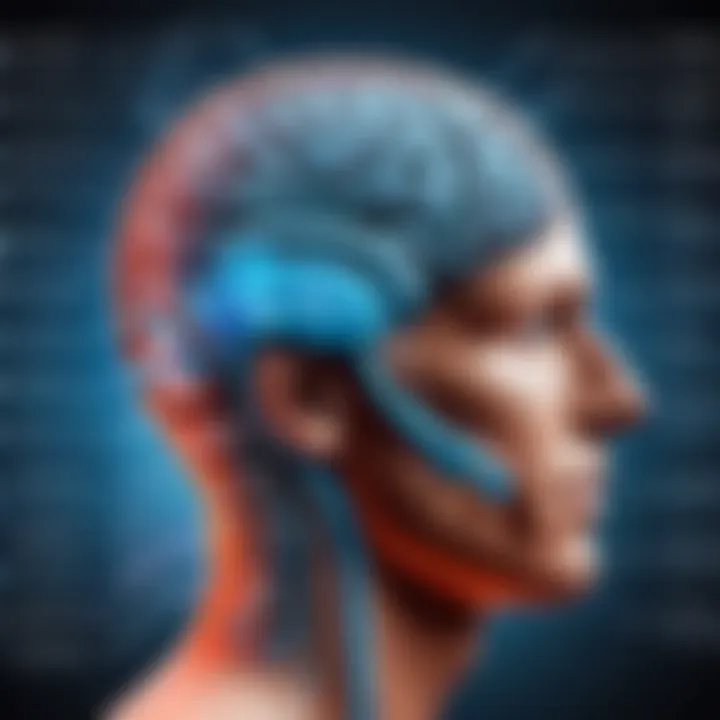
Types of Memory
Memory can be categorized in different ways, but three primary types stand out: sensory memory, short-term memory, and long-term memory. Each serves a distinct function and comes with its unique characteristics:
- Sensory Memory: Lasts for a few seconds, capturing raw data our senses initially perceive.
- Short-term Memory: Holds a smaller amount of information for a moderate duration, typically around 30 seconds. This is where you might remember a phone number right after hearing it.
- Long-term Memory: This is our treasure trove of experiences and knowledge, capable of lasting a lifetime, with subcategories including explicit (declarative) and implicit (procedural) memories.
The benefit of understanding these types lies in how they reflect on our learning processes. For instance, knowing that short-term memory can be easily overwhelmed makes it clear why effective study techniques rely on repetition and organization. In this article, the exploration of types of memory highlights how different memories contribute to our learning and decision-making.
The Memory Process
At its core, the memory process involves three key stages: encoding, storage, and retrieval.
- Encoding: This is when information is first transformed into a form that can be stored. It's like translating a foreign language into something you can read.
- Storage: Here, information is kept in our consciousness, organized in such a way that it can be accessed later. Think of this stage as filing away documents in a library, categorized by subject so you can find them easily.
- Retrieval: This is the act of recalling stored information, enabling us to use past experiences to inform our current actions. Retrieval can be tricky—sometimes the library is closed, or we forget where we’ve put a valuable book.
Understanding the memory process is fundamental to dissecting how we interact with knowledge. It offers insights into why some memories fade over time while others remain vivid. The unique aspect of this process in the context of our article illustrates that clarity in memory functioning can enhance learning strategies and improve decision-making skills.
Decision Making and Problem Solving
Decision making is an intricate web involving various cognitive processes. The ability to make sound decisions, balancing logic and intuition, relies heavily on how well we process information and recall memories. When faced with a dilemma, our brains sift through myriad options, weighing potential rewards and consequences. There’s a term for this: bounded rationality, which suggests that while we aim for the best decisions, we often settle for satisfactory ones given our constraints.
Problem solving engages critical thinking and creativity, demonstrating the synergy between different cognitive functions. It’s not always about having all the right answers; it’s often more about asking the right questions. Analyzing what is at stake, predicting outcomes, and joining dots from past experiences is what enriches our decision-making prowess.
By exploring these cognitive processes, readers gain a comprehensive understanding of the mechanisms underlying human thought and behavior, further enhancing the value of this article in comprehending the vast realm of the human brain.
Brain Plasticity
Brain plasticity, or neuroplasticity, is a fundamental concept in understanding how the human brain adapts and evolves over time. This phenomenon encompasses the brain's capacity to reorganize itself by forming new neural connections. Such adaptability means that the brain is not static; instead, it changes as a result of experiences, learning, and environmental shifts. This section aims to dive into what brain plasticity is, why it's essential for cognitive health, and what influences this capacity.
Understanding Neuroplasticity
Neuroplasticity can seem like a perplexing term. In simple terms, it refers to the brain's ability to modify its structure and function in response to various stimuli. This adaptability can be as straightforward as learning a new skill, such as playing the piano or riding a bike, or recovering from a brain injury. The brain is constantly reshaping itself, and this ongoing process plays a critical role in learning, memory, and even emotional regulation.
The concept illustrates that our thinking and habits can mold our brain, meaning that with consistent effort and practice, we can develop and strengthen neural pathways. This reshaping isn’t merely about change—it’s a representation of growth and recovery, showcasing the brain's potential for regeneration and improvement throughout life.
Factors Influencing Plasticity
Several factors play a role in how effectively the brain can adapt. Three stand out, each impacting brain plasticity in significant ways:
Learning
Learning is a key player in enhancing brain plasticity. When we engage in learning—be it through study, practice, or even casual assimilation of new information—the brain creates and strengthens neural connections. A key characteristic of learning within this context is its reliance on repetitive practice and exposure. This characteristic makes learning an essential topic for anyone seeking to understand brain functionality.
By constantly challenging ourselves to learn new skills, we rewire our brain pathways, thereby facilitating enhanced cognitive functions. However, it’s essential to note that there’s a unique feature in this aspect of learning: while it can lead to significant improvement, it does require time and effort. For example, a novice pianist may find it frustrating to learn a new piece, but over time, through disciplined practice, they achieve competence. The main disadvantage here is the potential for burnout if the process isn’t balanced with rest and recovery.
Experience
Experience shapes the brain at almost every level. As we navigate life, new experiences challenge our existing understanding and perceptions. This interaction leads to an important characteristic of experience: it provides a contextual framework that aids learning. The breadth of our experiences can either enhance or limit our cognitive flexibility.
For instance, someone traveling to different cultures can compare, contrast, and adapt their views, enriching their cognitive toolkit. The unique feature of experience lies in its unpredictability: it shapes how we think and solve problems, promoting adaptability. One disadvantage here is that negative experiences can create rigid pathways that may hinder alternatives, leading to detrimental patterns.
Environment
The environment plays a crucial role in facilitating or impeding brain plasticity. The key characteristic of the environment in this discussion is its influence on external stimuli, which is vital for cognitive engagement. A rich and stimulating environment can boost learning opportunities and encourage neural growth. For example, children raised in intellectually stimulating homes tend to exhibit enhanced cognitive abilities as they develop.
However, the environment can also have adverse effects. High-stress environments can lead to anxiety and other mental health issues, interfering with neural adaptability. The unique feature of environmental factors is their varying impacts—while a supportive setting promotes growth, a negative one can stifle potential.
In summary, brain plasticity is a profound and transformative aspect of how we learn, adapt, and recover. Through understanding the influence of factors like learning, experience, and environment, we can better appreciate the resilience of the human brain.
Impacts of External Factors
When we discuss the human brain and its functionality, we cannot overlook the role of external factors. Various elements like nutrition, physical activity, and psychological well-being all impact brain health and cognitive performance. Understanding these influences provides insight into maintaining optimal brain function and promoting mental clarity. It's crucial to recognize how these external forces shape not just our brain's architecture but also our overall behavior and decision-making processes.
The Influence of Nutrition
Nutrition plays a fundamental role in ensuring our brain operates at its peak capability. The brain relies heavily on specific nutrients to maintain neural functions and support overall cognitive health. Good eating habits provide the building blocks necessary for neurotransmitter production and cell membrane functioning.
A diet rich in omega-3 fatty acids, found in fish such as salmon, plays a vital role in brain function. Omega-3s contribute to the smooth flow of information between neurons and are associated with reduced risk of cognitive decline.
Moreover, antioxidants found in fruits and vegetables can protect brain cells from oxidative stress. Minerals like zinc and magnesium also help in the production of neurotransmitters, influencing mood and cognitive function.
In contrast, a diet high in refined sugars and unhealthy fats can have adverse effects. It may lead to inflammation and contribute to a decline in cognitive abilities. In essence, what we eat has a direct bearing on our brain's performance, emphasizing the need for conscious dietary choices.
Effects of Exercise on Brain Health
Physical activity, often lauded for its myriad of health benefits, is also a key player in brain health. Regular exercise increases blood flow to the brain, which can boost cognitive functions and enhance memory retention. This surge in blood supply means more oxygen and essential nutrients are reaching crucial brain areas.
Research has shown that aerobic exercise enhances neurogenesis—the creation of new neurons—particularly in the hippocampus, which is essential for memory and learning. Notably, engaging in activities like running, swimming, or even brisk walking can have profound impacts on mood and anxiety levels, further reflecting exercise's importance in mental health.
- Benefits of exercise include:
- Enhanced mood regulation through the release of endorphins.
- Improved attention and concentration.
- Increased resilience against age-related cognitive decline.
Consequently, integrating physical activity into daily routines becomes essential, especially as we navigate the complexities of modern life.
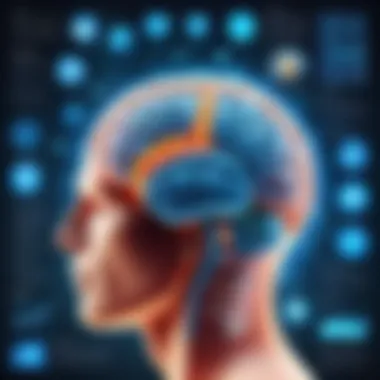
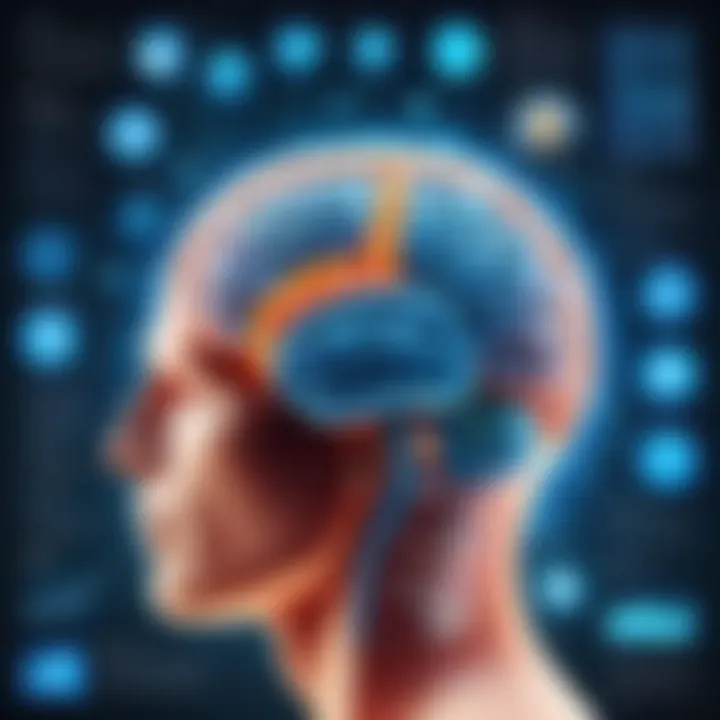
Impact of Stress and Mental Health
The relationship between stress and brain functionality is a dual-edged sword. While a certain level of stress can motivate and improve performance, chronic stress can wreak havoc on cognitive health. Prolonged exposure to stress hormones, such as cortisol, can lead to impaired memory and reduced learning capacity.
Additionally, stress is closely tied to various mental health disorders. Conditions like anxiety and depression can alter neural pathways and reduce overall brain efficiency. Recognizing stress management techniques, such as mindfulness and relaxation exercises, can significantly improve both mental health and cognitive capabilities.
It’s important to address mental health matters proactively. Seeking support, whether through professional help or community resources, can aid in fostering a healthier mind and, by extension, a healthier brain.
"The more we understand the interplay of these external factors, the better equipped we are to enhance our cognitive abilities and mental resilience."
In sum, the influences of nutrition, exercise, and stress cannot be overstated. Addressing these external factors is essential not just for brain health but for overall well-being and quality of life. By being mindful of these aspects, we can harness our brain's full potential.
Technological Advancements and Brain Study
Technological advancements have transformed the landscape of neuroscience, providing researchers with tools to explore the intricacies of the human brain like never before. The significance of these developments cannot be overstated. They enable scientists to peer into the brain's inner workings, leading to deeper insights into how we think, feel, and behave. With innovations such as neuroimaging, varied methodologies allow for real-time observation of brain activity, thus elevating our understanding of not just typical functioning but also the ramifications of injury, disease, and developmental disorders.
Neuroimaging Techniques
Neuroimaging has emerged as a cornerstone of modern brain study. Through various imaging techniques, researchers can visualize and measure brain activity, offering invaluable data.
MRI
Magnetic Resonance Imaging (MRI) stands out due to its ability to provide high-resolution images of brain structures. One key characteristic of MRI is its non-invasive nature, meaning patients don't need to undergo any surgical procedures. This advantage makes it a popular choice for clinical and research purposes. MRI provides exceptional detail of anatomical structures, making it perfect for diagnosing conditions like tumors or strokes. However, one must consider the longer scan times and the potential discomfort some individuals may experience while inside the MRI machine.
fMRI
When it comes to functional MRI (fMRI), the focus shifts from structure to function. fMRI tracks changes in blood flow, which correlate to neuronal activity. Its ability to provide real-time insights into brain functions while a subject performs tasks has made it a game-changer. This technique is particularly beneficial for understanding how different brain regions interact during various cognitive processes. However, it is worth noting that fMRI can sometimes face challenges in providing definitive insights due to the complexities involved in interpreting the correlation between blood flow and actual neuronal activity.
CT Scans
Computed Tomography (CT) scans offer a different approach by combining X-ray technology with computer processing to create cross-sectional images of the brain. This method is commendable for its speed; CT scans can be executed in a matter of minutes, which is crucial during emergencies like stroke detection. While CT scans excel in providing quick insights, they expose individuals to radiation, which is a notable disadvantage when compared to MRI or fMRI.
Brain-Computer Interfaces
The evolution of brain-computer interfaces (BCIs) marks a fascinating area of technological advancement. BCIs provide direct communication pathways between the brain and external devices. This technology opens doors for individuals with mobility impairments to control prosthetics or interact with computers simply through thought. The significance of this lies in its potential to enhance the quality of life for many. However, developing reliable and precise BCI systems remains a challenge. Issues concerning signal clarity and user adaptability can complicate their practical application.
In summary, advancements in technologies such as MRI, fMRI, and CT scans enrich our understanding of the brain's complex machinery. These techniques also pave the way for innovative solutions like brain-computer interfaces that promise to reshape the future of how we interact with both our environment and technology.
Psychological Perspectives
One key offering of psychological perspectives is their ability to bridge the gap between the brain's physical structure and behavioral output. By analyzing brain activity through the lens of psychology, we can better appreciate how certain areas of the brain correlate with our thoughts, feelings, and actions. This multidisciplinary approach opens the door to a richer understanding of mental health issues, cognitive disorders, and the overall human experience.
Behaviorism and the Brain
Behaviorism stands as one of the foundational theories in psychology, placing emphasis on observable behaviors rather than internal thoughts. This approach asserts that all actions are learned through interaction with the environment, relying heavily on principles like conditioning. For instance, when a child learns to say "please" when requesting something, they are responding to a conditioned reaction promoted by positive reinforcement.
In terms of brain functionality, behaviorism encourages researchers to investigate how external stimuli elicit responses within the brain's circuitry. Recent studies employing neuroimaging techniques have begun to illustrate how behaviors lead to specific neural responses, suggesting that our actions can indeed sculpt our neural architecture over time.
Furthermore, behaviorism informs therapeutic methods. Techniques such as exposure therapy use the principles of behaviorism to rewire the brain's response to anxiety-producing stimuli. This reveals how understanding the brain's learned responses can inform practical applications in therapy—all while maintaining a focus on observable behavior.
Cognitive Psychology Insights
Cognitive psychology, in contrast to behaviorism, zeroes in on the mental processes involved in perceiving, thinking, and remembering. This perspective is essential, as it argues that understanding the human experience requires more than observing behaviors; it necessitates comprehension of the cognitive frameworks that shape how we interpret the world around us.
For instance, cognitive psychology studies how we categorize information and form memories. Research has shown that our brains utilize schemas—mental structures that help us organize and interpret information. These structures are shaped through experience and can dictate how we perceive new information, making cognitive psychology invaluable for understanding interactions in learning and memory formation.
Moreover, insights from cognitive psychology also lead to advancements in artificial intelligence and machine learning. By mimicking cognitive processes, technologists create systems capable of human-like understanding and decision-making. This interplay between cognitive psychology and technology emphasizes the role of cognitive structures in driving innovation.
The integration of these psychological perspectives enriches our understanding of the brain, providing a more nuanced picture of how we think, feel, and act. The synergy between behaviorist principles and cognitive insights highlights the adaptable nature of the human brain, revealing the complexity of our interactions with internal and external stimuli.
"Neuroscience is now showing us that there is no distinct separation between cognition and behavior; both are intertwined in the fabric of the brain's functionality."
Embracing these perspectives allows for a holistic approach to psychological research, underscoring the importance of both learned behavior and mental processes in the study of the human brain. The journey into understanding how these psychological frameworks interlace with brain function is just as vital as the physical anatomy of this remarkable organ.
Future Directions in Neuroresearch
The rapid evolution of neuroresearch is not just a passing trend; it is a necessity for understanding the complexities of the human brain. Emerging fields and innovative tools are paving the way for breakthroughs that could change our comprehension of brain functionality. As researchers continue to refine methodologies and delve into uncharted territories, the implications for health, behavior, and cognitive enhancement become increasingly significant.
When we ponder up-and-coming areas of study, we are not merely looking at advancements in technology but also a shift in how we conceptualize mental processes and disorders. This exploration opens doors to multiple benefits, such as enhanced therapeutic approaches, personalized medicine, and ultimately, improved quality of life for individuals affected by neurological conditions.
Emerging Areas of Study
The landscape of neuroscience is shifting drastically, with several emerging areas garnering attention. One significant focus is connectomics—the mapping of neural connections in the brain. This field aims to create comprehensive diagrams of neural circuits, which could elucidate the underpinnings of behavior, learning, and memory. For instance, research in connectomics is expected to unravel how certain brain circuit configurations contribute to conditions like autism or schizophrenia.
Moreover, brain-computer interfaces (BCIs) represent a compelling frontier with real-world applications. BCIs facilitate direct communication between the brain and external devices, potentially transforming the way individuals with disabilities interact with their environment. Think about the possibilities of restoring mobility to those with motor impairments or even allowing us to control digital devices with mere thoughts.
Another promising area is neural regenerative medicine. Researchers are investigating how stem cells or other regenerative techniques can repair or replace damaged neurons, opening a pathway to reversing conditions like spinal cord injuries or neurodegenerative diseases.
In addition to these fields, the integration of artificial intelligence in neuroscience enhances our capabilities for data analysis and predictive modeling, streamlining the process from raw data to actionable insights. This trend could accelerate discoveries, making effective treatments more accessible to various populations.
Ethical Considerations in Brain Research
With the advancement of neuroresearch, one cannot overlook the ethical dimensions that accompany these developments. The potential for manipulating brain functions raises questions around consent, privacy, and the implications of enhancing cognitive abilities or controlling behaviors.
A critical consideration arises with technologies like BCIs. While they offer tremendous aid for individuals with disabilities, they also pose privacy concerns regarding thoughts and data that could be extracted without consent. It's essential to navigate this minefield with caution, ensuring that protections are in place to honor individuals' rights in brain manipulation.
Additionally, as we explore treatments for mental health disorders or cognitive enhancement, the line between therapy and enhancement blurs. This dichotomy brings forth debates regarding access—who can afford enhancements and who can’t?
"To remain at the forefront of neuroscience, we must balance innovation with ethical responsibility."
Addressing these ethical considerations isn't merely an afterthought; it is crucial for the integrity of research. Open dialogues among scientists, ethicists, and the public will foster a thoughtful approach as we chart the future of neuroresearch, ensuring that progress serves humanity's best interests.
The journey ahead in understanding the human brain is thrilling and filled with complex inquiries. By staying attuned to the emerging areas of study and ethically navigating these advancements, the realm of neuroresearch can promise fruitful discoveries that resonate in our everyday lives.







